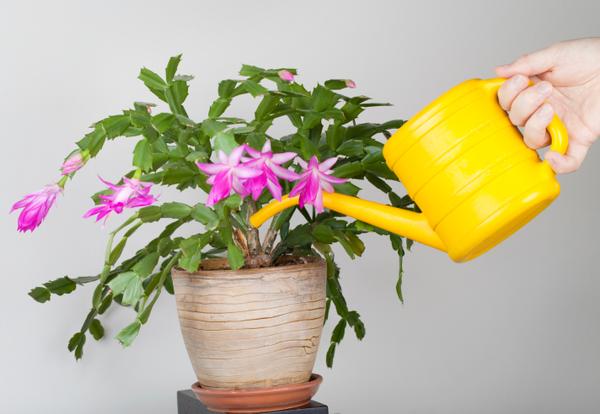 Growth and development of plants are adjacent to air, Light and temperature are also decisively influenced by water, because all important life processes are directly or indirectly dependent on an adequate water supply. We can see this influence of the water supply on the growth of plants most clearly in our indoor plants, which are solely dependent on the water supply by watering, since them rainwater – like in the great outdoors – is not available.
Growth and development of plants are adjacent to air, Light and temperature are also decisively influenced by water, because all important life processes are directly or indirectly dependent on an adequate water supply. We can see this influence of the water supply on the growth of plants most clearly in our indoor plants, which are solely dependent on the water supply by watering, since them rainwater – like in the great outdoors – is not available.
Herbaceous plants exist too 70 to 95 percent from water; even woody plants still have a water content of up to 50 percent up. Further investigation revealed, that our horticultural crops about 300 to 400 kg of water required, a 1 kg of dry matter to produce. be here 98 percent of the water absorbed is released back into the air and only 2 Percent consumed to build the plant body.
Water is usually absorbed through the roots, so that we have to carry out a water supply of the soil corresponding to the needs of the plants. In some pineapple plants (with. B. Aechmea- and Billbergia species) However, the water is absorbed by the so-called dandruff hairs, which sit in large numbers on the leaves, while the roots primarily serve as adhesive organs. With such plants, care must be taken to ensure a high water vapor content in the air, that the "cistern" formed by the leaves is always filled with water.
The importance of humidity for plant growth has already been pointed out elsewhere. It exerts a significant influence on the water release – and thus on the water requirement of the plant. When the humidity in the air is lower, there is an increased release of water in the form of water vapour (Transpiration) and a correspondingly greater water consumption. With extraordinarily strong perspiration and insufficient water supply, the water pressure in the cells decreases, and the plant wilts or wilts. Overspray increases humidity and reduces transpiration, so that the withering plant will soon straighten up again, if it can absorb enough water from the ground. So the wilting of the plant happens once through this, that the water consumption of the plant exceeds the water supply, but it is often also the sign for it, that the plant is too wet or too cold, damaging the roots and preventing them from absorbing water from the soil.